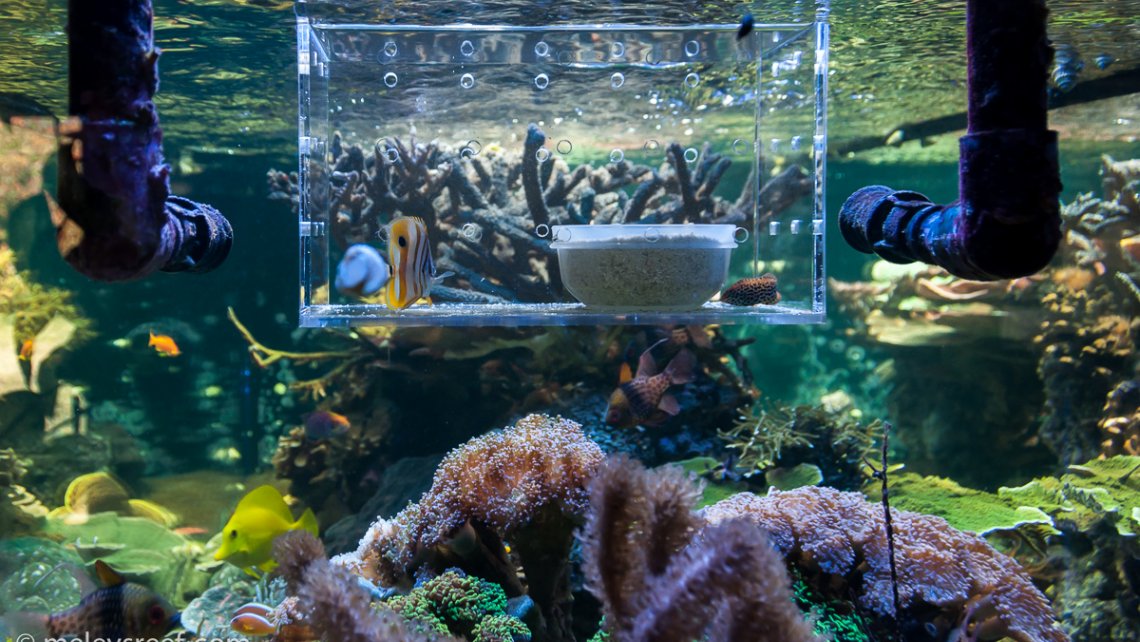Copperband Butterfly & Leopard Wrasse
Last Wednesday night I bought two fish at our club meeting (Dallas North Aquarium was the venue). Once I got them home, they were acclimated to my reef's salinity which took all night. Salinity of the store water was 1.021sg while my reef is 1.026sg.
I was using a drip acclimation method, but since it was taking so long I used an airstone for oxygen and a heater to keep the water stable. The next day both fish were bathed in the two-part Safety Stop routine, which takes care of external parasites. They were then placed in The Peacemaker (which I sell in my shop), which is an acrylic box that is suspended in the reef. The fish stay there for three days to meet their neighbors without fighting. This method has worked very well for all new fish additions over the last few years (starting in 2011). I put a bowl of sand in the acrylic box for the wrasse to sleep in each night, and the next day it would emerge and swim around in the box. :)
A few times a day, I would feed the two fish in the Peacemaker. I used live brine shrimp since that is what the store was using with success. If they know the fish is eating something, I want to know it too. I'm happy to buy that same food to keep the fish eating until it transitions to the foods I offered. Copperband Butterflyfish are really tough to keep long term. Usually they refuse to eat and no matter what you do, it's doomed. Live black worms are one suggested method, if you can get them in your area.
I bought the brine shrimp and watched closely. The first day the fish didn't care. I tried some Reef Caviar (fish eggs) with zero luck. I also thawed some frozen foods, but there was little interest. Friday though, the CBB was slurping them up and that was just what I wanted to see. Matter of fact, that was huge and really made me feel like this one will make it. The Leopard Wrasse wasn't really interested. Yesterday I picked up more live brine from the LFS a mile away, and fed both fish a few times, and did the same today. They looked like they were ready to explore the reef by nightfall, so they were released about 30 minutes ago. Hopefully everyone is going to get used to their new neighbors, right? RIGHT?! They better.
I've been watching the CBB and have seen it find some worms already, and expect it to start devouring the aiptasia anemones soon.

The last time I tried to keep a Copperband was about 1.5 years ago. It never ate once in the Peacemaker and out of desperation I released it into the reef hoping it would find nourishment. It was a dismal failure. Prior to that, I'd had one for about 5 years, and it was a gorgeous active fish in my 280g reef. That's why I've wanted a new one in the 400g.
The Leopard Wrasse is stunning, one I've seen in many tanks over the years. This is my first one, and I hope it loves its new home. This will be the third wrasse in my reef; the other two are the Melanurus and the Mystery Wrasse.













